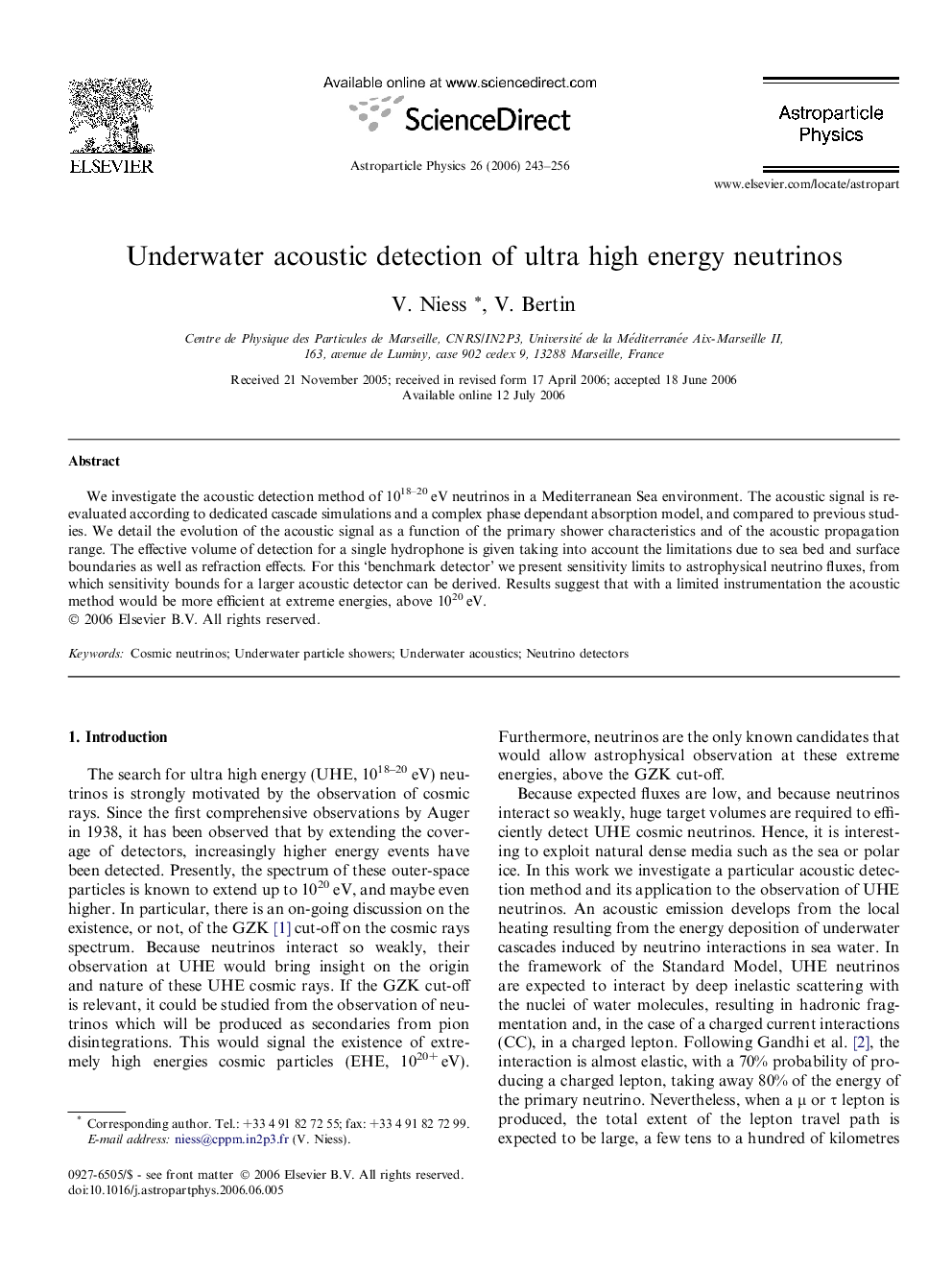| Article ID | Journal | Published Year | Pages | File Type |
|---|---|---|---|---|
| 1771550 | Astroparticle Physics | 2006 | 14 Pages |
We investigate the acoustic detection method of 1018–20 eV neutrinos in a Mediterranean Sea environment. The acoustic signal is re-evaluated according to dedicated cascade simulations and a complex phase dependant absorption model, and compared to previous studies. We detail the evolution of the acoustic signal as a function of the primary shower characteristics and of the acoustic propagation range. The effective volume of detection for a single hydrophone is given taking into account the limitations due to sea bed and surface boundaries as well as refraction effects. For this ‘benchmark detector’ we present sensitivity limits to astrophysical neutrino fluxes, from which sensitivity bounds for a larger acoustic detector can be derived. Results suggest that with a limited instrumentation the acoustic method would be more efficient at extreme energies, above 1020 eV.
